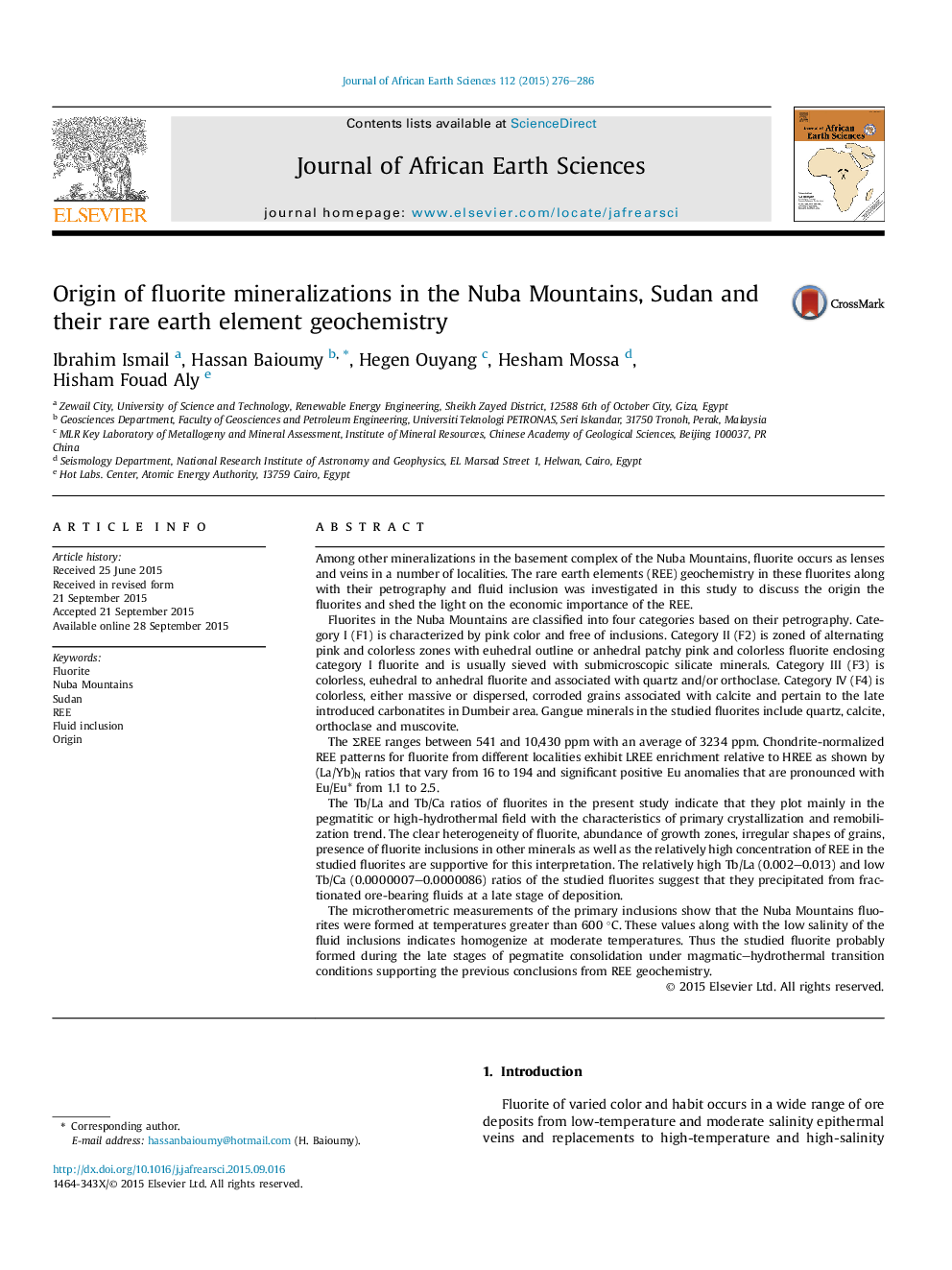| کد مقاله | کد نشریه | سال انتشار | مقاله انگلیسی | نسخه تمام متن |
|---|---|---|---|---|
| 4728384 | 1356450 | 2015 | 11 صفحه PDF | دانلود رایگان |
• Fluorite occurs as lenses/veins in a number of localities in the Nuba Mountains.
• Fluorite is classified into four categories based on their petrography.
• It exhibits a relatively high concentration of rare earth elements (REE).
• REE doesn't occur in the fluorite structure but rather as independent mineral(s).
• Fluorite formed at late stage of pegmatite under magmatic–hydrothermal transition conditions.
Among other mineralizations in the basement complex of the Nuba Mountains, fluorite occurs as lenses and veins in a number of localities. The rare earth elements (REE) geochemistry in these fluorites along with their petrography and fluid inclusion was investigated in this study to discuss the origin the fluorites and shed the light on the economic importance of the REE.Fluorites in the Nuba Mountains are classified into four categories based on their petrography. Category I (F1) is characterized by pink color and free of inclusions. Category II (F2) is zoned of alternating pink and colorless zones with euhedral outline or anhedral patchy pink and colorless fluorite enclosing category I fluorite and is usually sieved with submicroscopic silicate minerals. Category III (F3) is colorless, euhedral to anhedral fluorite and associated with quartz and/or orthoclase. Category IV (F4) is colorless, either massive or dispersed, corroded grains associated with calcite and pertain to the late introduced carbonatites in Dumbeir area. Gangue minerals in the studied fluorites include quartz, calcite, orthoclase and muscovite.The ΣREE ranges between 541 and 10,430 ppm with an average of 3234 ppm. Chondrite-normalized REE patterns for fluorite from different localities exhibit LREE enrichment relative to HREE as shown by (La/Yb)N ratios that vary from 16 to 194 and significant positive Eu anomalies that are pronounced with Eu/Eu* from 1.1 to 2.5.The Tb/La and Tb/Ca ratios of fluorites in the present study indicate that they plot mainly in the pegmatitic or high-hydrothermal field with the characteristics of primary crystallization and remobilization trend. The clear heterogeneity of fluorite, abundance of growth zones, irregular shapes of grains, presence of fluorite inclusions in other minerals as well as the relatively high concentration of REE in the studied fluorites are supportive for this interpretation. The relatively high Tb/La (0.002–0.013) and low Tb/Ca (0.0000007–0.0000086) ratios of the studied fluorites suggest that they precipitated from fractionated ore-bearing fluids at a late stage of deposition.The microtherometric measurements of the primary inclusions show that the Nuba Mountains fluorites were formed at temperatures greater than 600 °C. These values along with the low salinity of the fluid inclusions indicates homogenize at moderate temperatures. Thus the studied fluorite probably formed during the late stages of pegmatite consolidation under magmatic–hydrothermal transition conditions supporting the previous conclusions from REE geochemistry.
Journal: Journal of African Earth Sciences - Volume 112, Part A, December 2015, Pages 276–286
